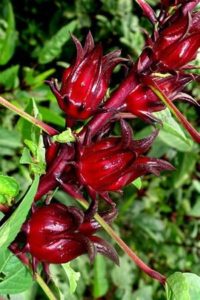|
Getting your Trinity Audio player ready...
|
Reading Time 5 mins
The month of May is especially significant to Caribbean Indians as it is ‘Arrival Month’ to recognize the coming of Indian Indentured labourers to the region. The following Caricom countries celebrate Indian Arrival day:

Chart created from: “St Lucia’s Indian Arrival Day:” Retrieved from Repeating Islands.
Ashook Ramsaran, the Guyanese born, New-York-based President of the Indian Diaspora Council International, observed that staples of Indian heritage which sustain us in the Caribbean as much as elsewhere in the Diaspora are; “mantra, music, masala, memories, mentoring, Mata-ji and the value of money, thrift and hard work.” Ms. Ornella Boodoo is an entrepreneur who unintentionally exemplifies these legacies of Indian culture.
Indian Traditions
Ornella grew up with her grandmother but admitted, “the India Indian cultural part of it was not so much of any interest to me.” Her late grandmother, whom she called ‘Agie,’ would have been approximately 96 years old this year. Most likely her great grandparents came from India shortly before Indian Indentured immigration ended in 1917. She learned to make chutneys, roast pepper, kuchela, and achaar from her grandmother. The Covid-19 pandemic created an opportunity for her to utilize the knowledge and skills to start up a side business in the production of those same pickled products.
About the difference between hers and Agie’s creation, Ornella reverently declared, “Hers… somehow I don’t know, there’s no reason I can pinpoint, [but it] was super tastier and sweeter”. Ornella admits, “Agie had a hand for it,” and adds, “Even though I do everything that she did, her taste was somehow a little bit different… sweeter.” As to how the knowledge was communicated, Ornella confirmed, “[My grandmother] spoke Hindi the majority of the time, but we understood what [Agie] was saying because she did some English as well.” Ornella adds, “I grew up with her, and I learned because I used to assist when she was making her stuff.”
Indo Trinidadian Entrepreneurship
Ornella’s business is based in Freeport, Central Trinidad. The focus is on converting locally sourced, seasonal fruits and flowers into Indian pickled products and chutneys. The range of products sold under the brand name ‘Nella’s’ include Chalta Achaar, Tamarind Achaar, Mango Kuchela, Tamarind Chutney, Carambola Chutney, and Sorrel Chutney as well as Hot Chow Chow, Lime Pepper Sauce and Hot Pepper Sauce. Her choice of product line stemmed from producing what she was skilled at to meet the growing demand for “those unique Indian spicy flavors.”
She explained that she started the business about 18 months ago, recognizing that an increasing number of people were at home. Many businesses were forced to operate with employees working from home or, when it was impossible to do so, retrenched workers over the lockdown due to the Covid-19 pandemic. Her products are intended to enrich consumers’ gastronomic experience to make the stay-at-home more delightful. Explaining the growth in demand, she said, “I have a lot of customers who are asking for other products. They want seedless tamarind achaar and chutney, amchaar (mango achaar), and a host of other items which I haven’t started as yet.”
Health Benefits of Achaar and Chutney
Almost every culture universally has unique preservation methods for non-seasonal fruits and vegetables. In India, three common preservatives which are used are vinegar, salt, and oil. They are antibacterial and antimicrobial and consequently control the bacteria and micro-organisms which decompose food. The consumption of hot sauces, chutneys, and spicy pickles that Ornella makes with vinegar, salt, and oil transports the antibacterial and antimicrobial properties into the gut and stimulates the digestive system to break down carbohydrates and eliminate them.
Amit Sharma, a proponent of Ayurveda and contributor to the blog AyurvedGuru, cautions that while the probiotic benefits are undoubted, some people may need to consume in moderation to avoid overstimulation. It is the garam masala that gives achaar its distinct stimulating heat as well as intense flavor, health profile, and dark color.
Olivia Larsen, a researcher into healing plant foods, found most blends of garam masala include spices and herbs which aids in digestion, such as cumin (geera), cloves, cinnamon, coriander, cardamom, nutmeg, and black pepper. The chutney products also contain turmeric; the active ingredient curcumin protects against viruses, bacteria, and brain diseases such as Alzheimer’s. One of the main ingredients in the pickles is fruits used in the raw, green form. These provide antioxidants that protect against cancer-causing free radicals.
Innovative use of Flowers and Fruits
“The achaar and chutney that Agie used to make are repositories of culture,
good health, and flavor, which bring several benefits.”
Sorrel chutney is an innovation that Ornella made by combining homegrown sorrel flowers, sugar, spices, pepper, salt, and vinegar. Sorrel is popularly used to make drinks served at Christmas in Trinidad and Tobago, but she decided to repurpose the tangy flower petals by processing them into a chutney. The difference between achaar and the chutney is “the entire process to make the latter is done on the fire.”
Sorrel is beneficial because its acid causes the secretion of amylase, an enzyme that helps in the digestion of starch and sugar in the form of calories. For this reason, it is believed that regular consumption of sorrel aids in weight loss. The thick red petals are rich in antioxidants called anthocyanins, which according to the book, Prescription for Nutritional Healing, protects against the growth of cancerous cells in the body. Consumption of the sorrel flower, irrespective of how it is processed, reduces blood pressure, so people on blood-thinning medication should consume sorrel products sparingly.
Nella’s Carambola chutney (Five fingers or star fruit) is another unique product. Carambola is eaten raw in its ripe form, but the fruit is sour in its green form, hence better used for chutneys. Nutrition researcher Kris Gunnars cautions that the high oxalates in the carambola skin can have adverse effects for those with kidney disease and should be eaten infrequently. But when the fruit is converted into a chutney, the oxalates are broken down.
Additionally, according to registered dietician Rachael Link, carambola is rich in fiber, which helps cleanse the digestive system; vitamin C reduces inflammation and boosts immunity; and polyphenols which reduce cholesterol and therefore promote heart health.
Achaar made from Chalta (Bengali name) or (elephant apple) “involves hard work to chop the large fruits, clean out the seed, steam, and squeeze out the sour (cassa) liquid before adding masala and other ingredients.” But chalta achaar is a delicious condiment by itself or eaten with rice or roti and curries.
In terms of medicinal properties, according to Kawsar Mostafa of the Nature Study Society of Bangladesh, the fruit contains 10% insoluble matter, and the high fiber helps to relieve stomach upset by sweeping out the toxins. It is commonly used in Ayurveda to treat nervousness and fatigue.
The achaar and chutney that Agie used to make are repositories of culture, good health, and flavor, which bring several benefits. Through ‘Nella’s’ brand of products, tradition is passed down. Consumers benefit from the nutrients in the main ingredients and additives. They also derive pleasure from the aroma, taste, and memories associated with Indian pickles.
 Shalima Mohammed is a researcher and Business Psychologist.
Shalima Mohammed is a researcher and Business Psychologist.
Email: shalimamd@gmail.com




